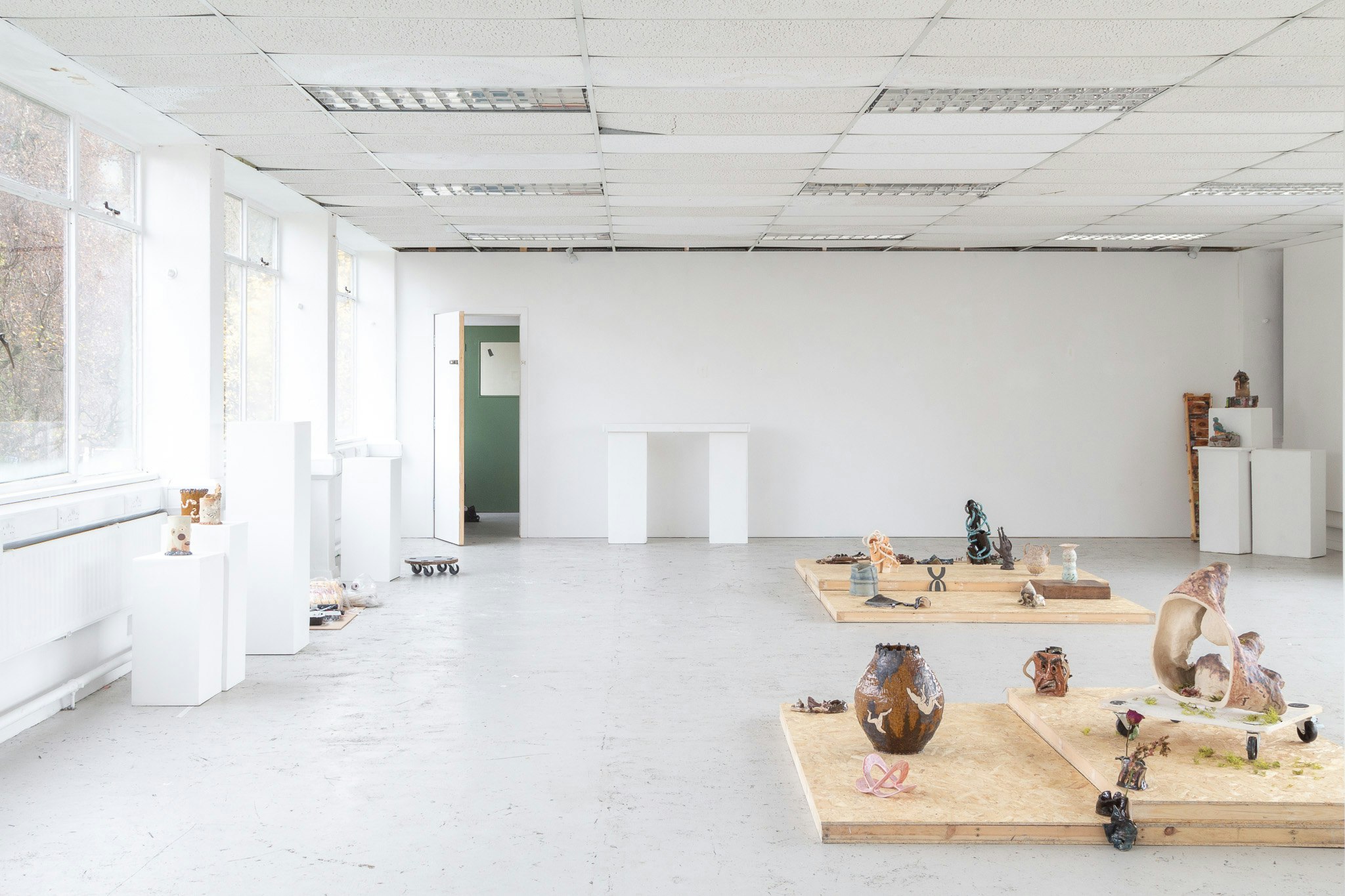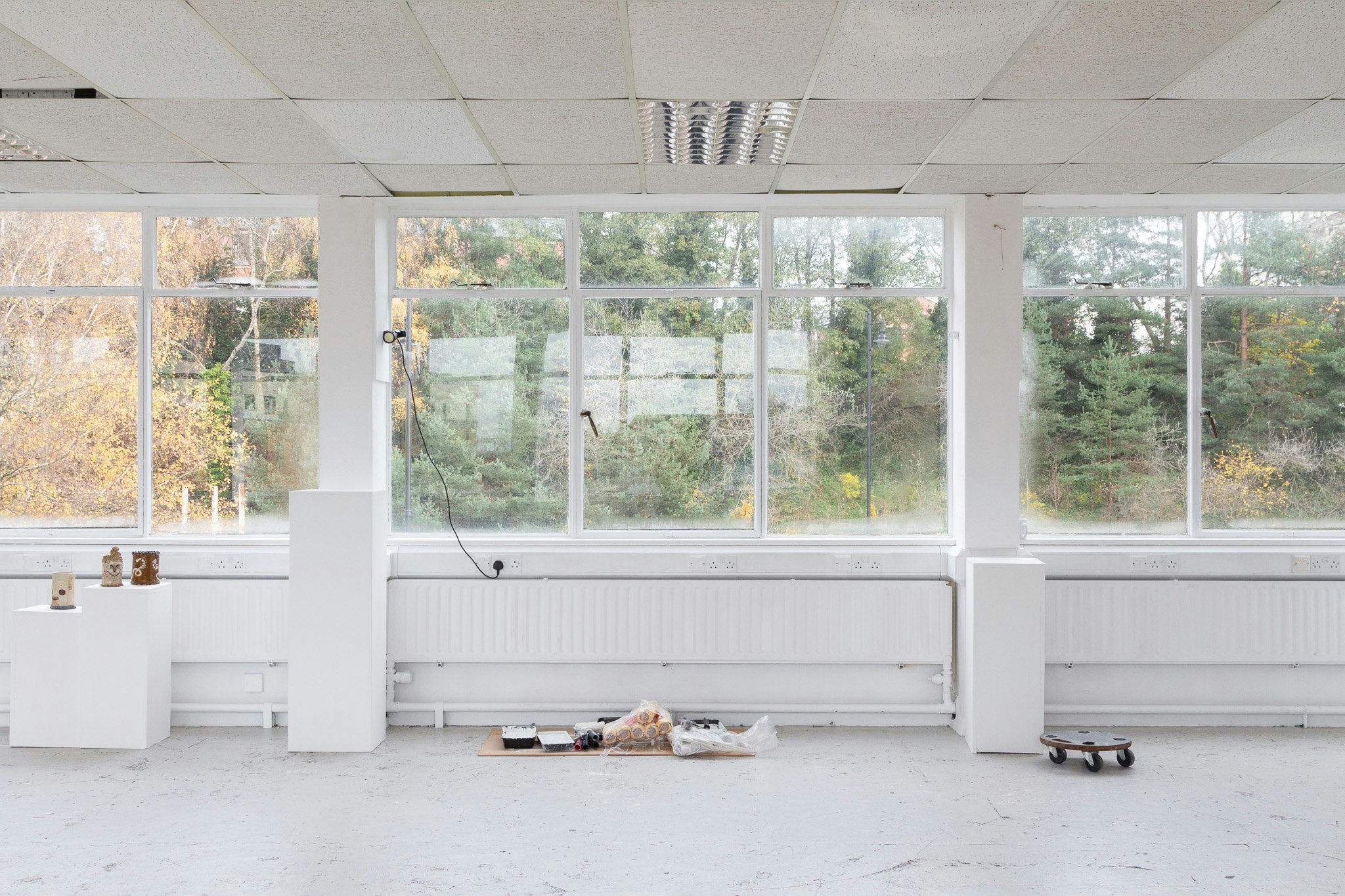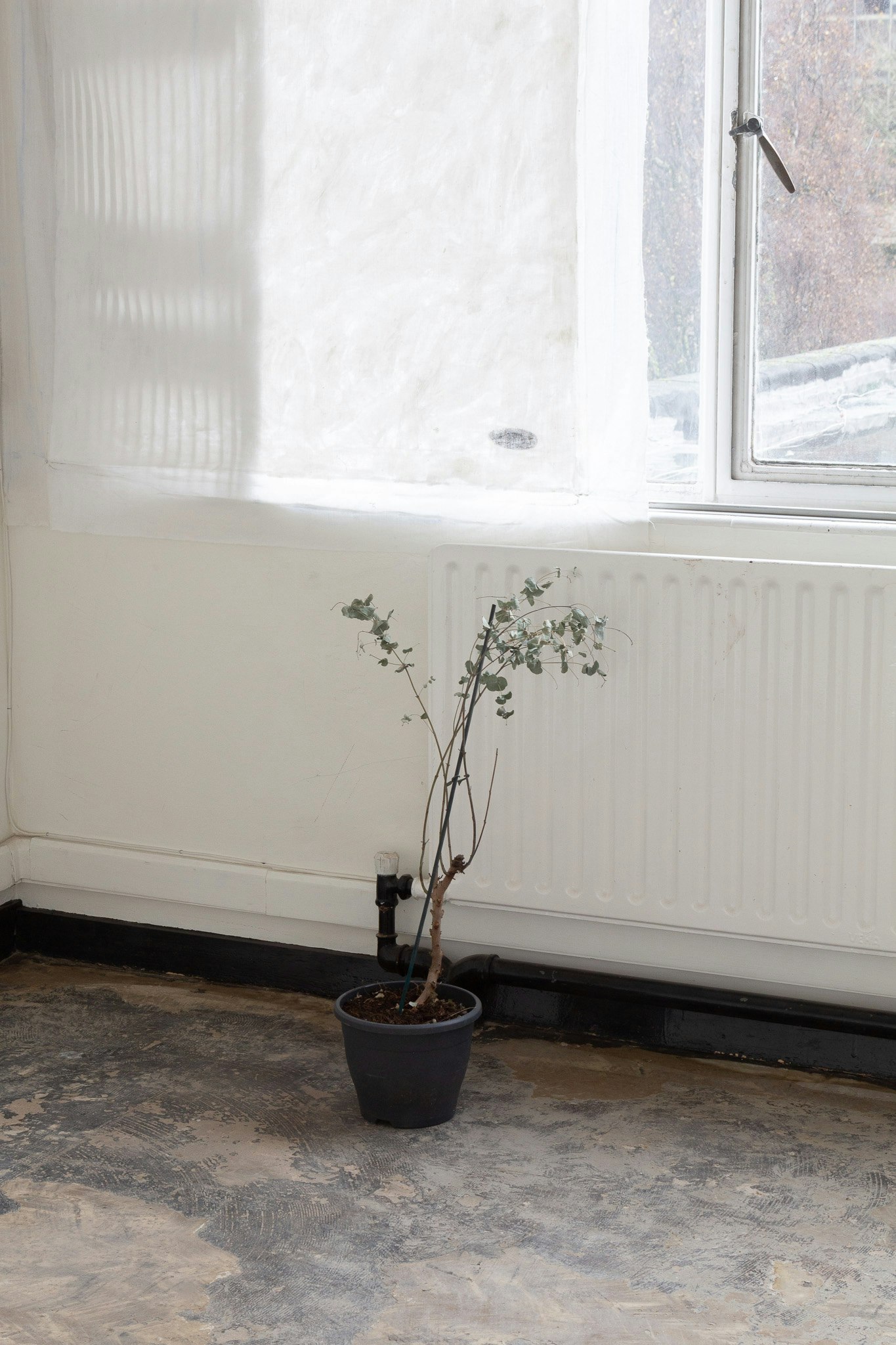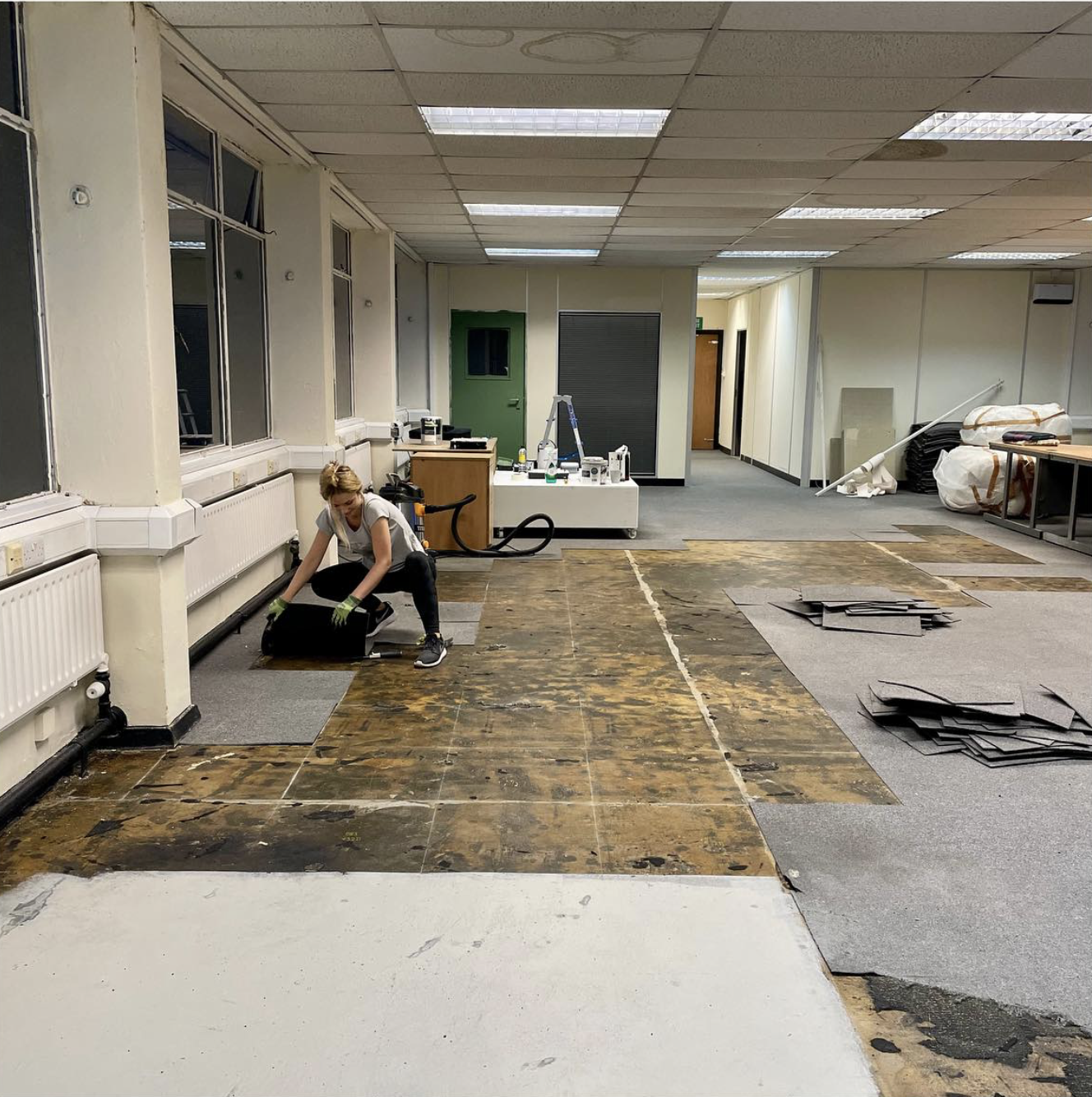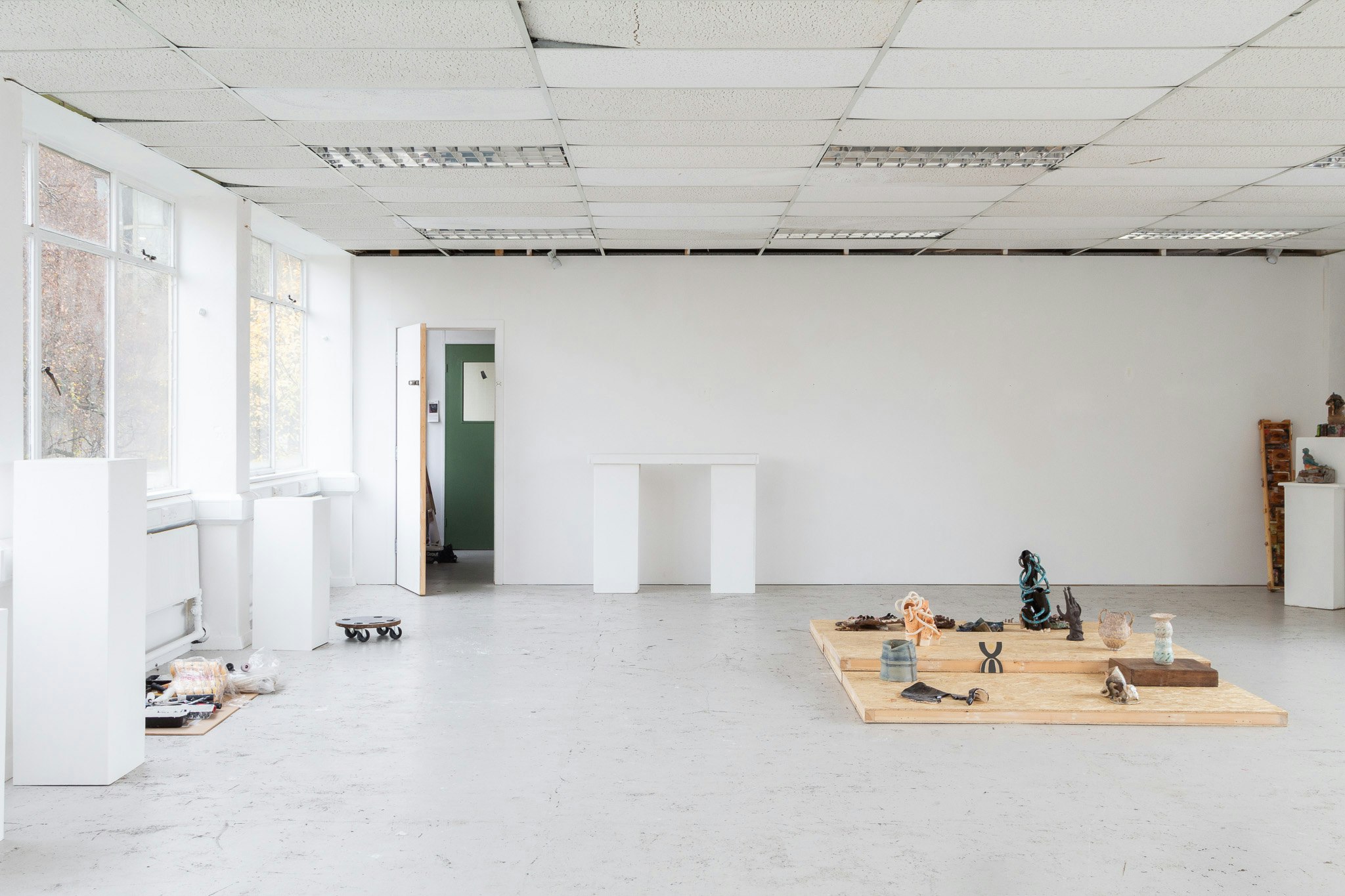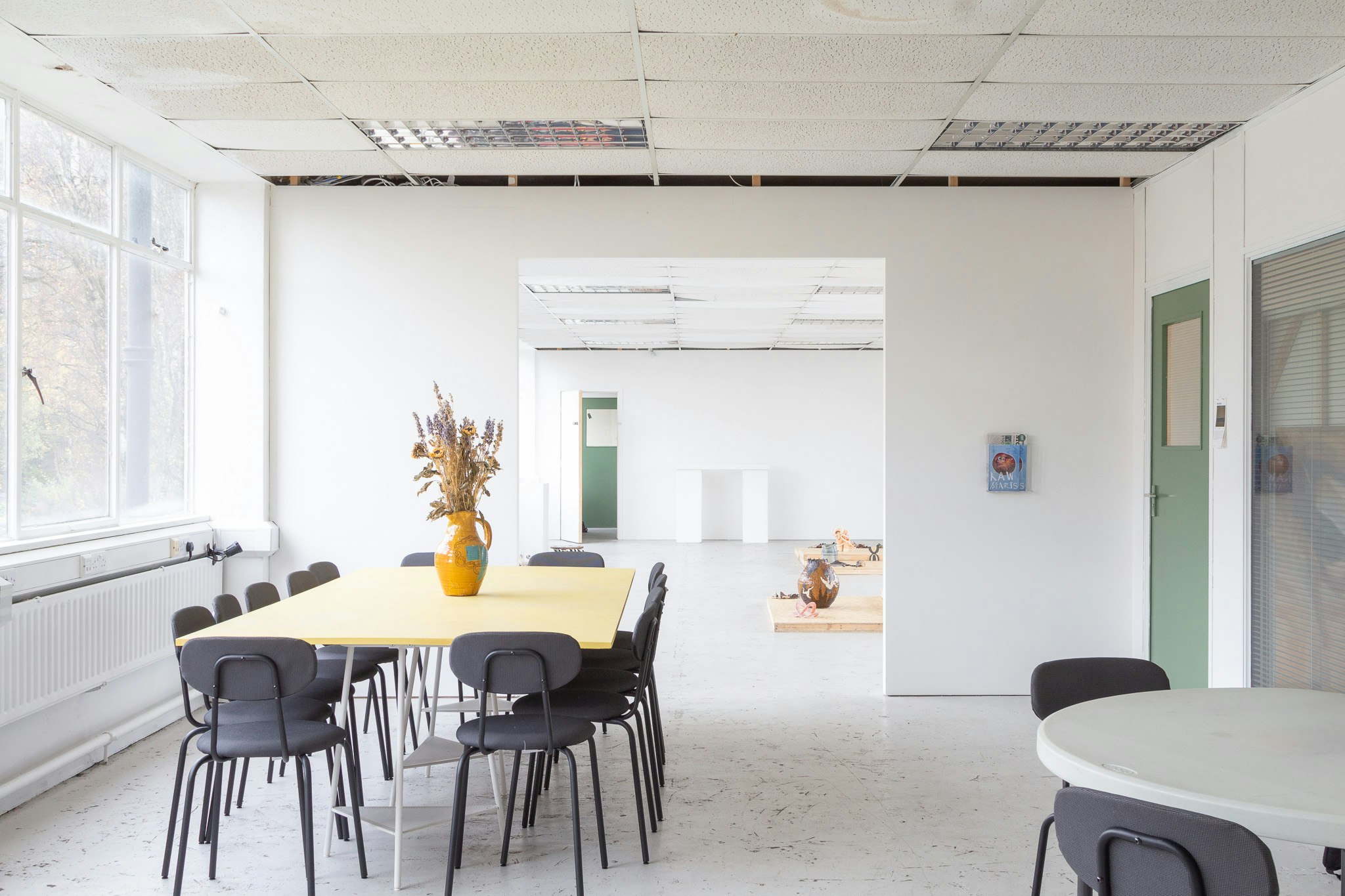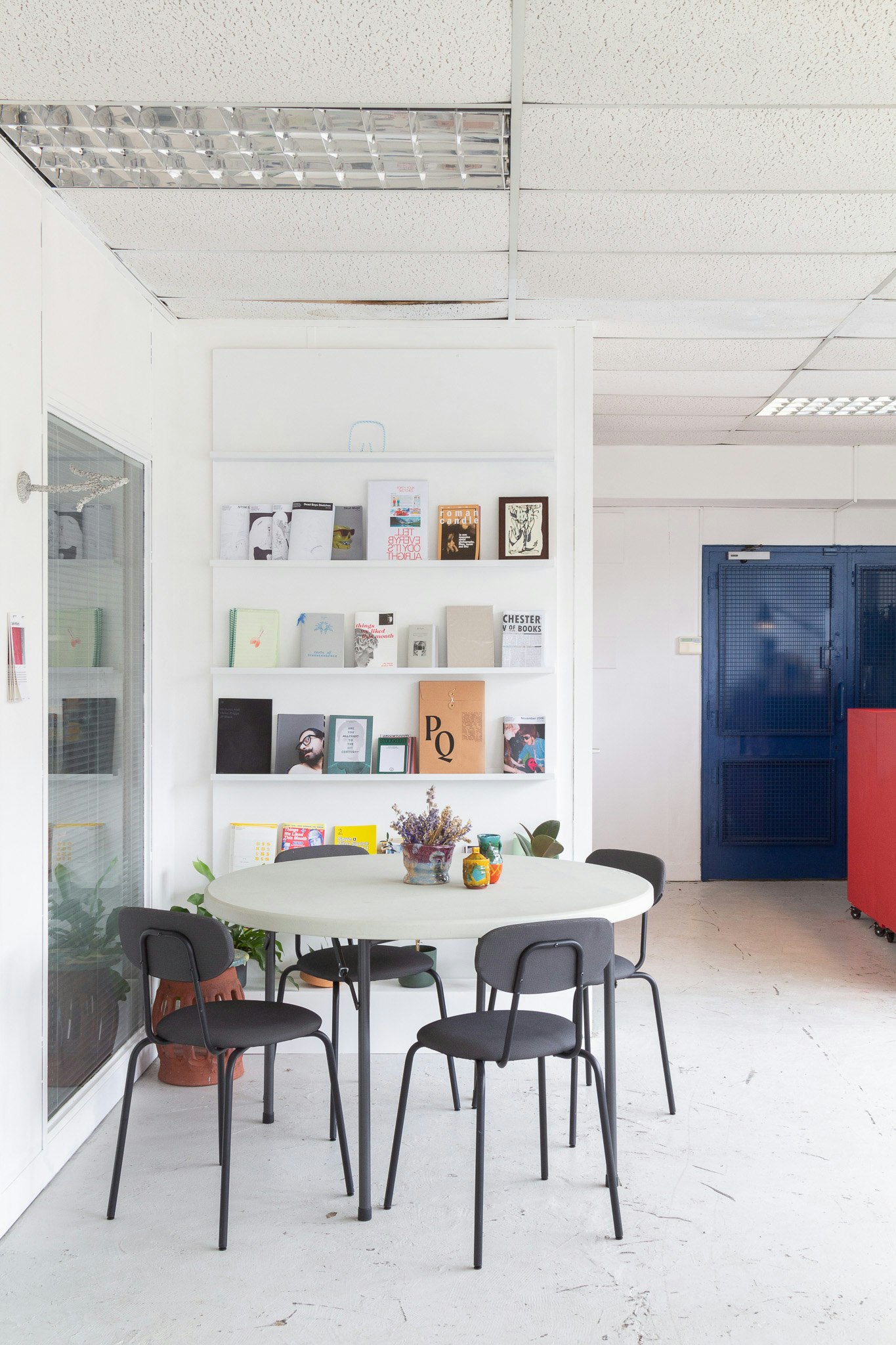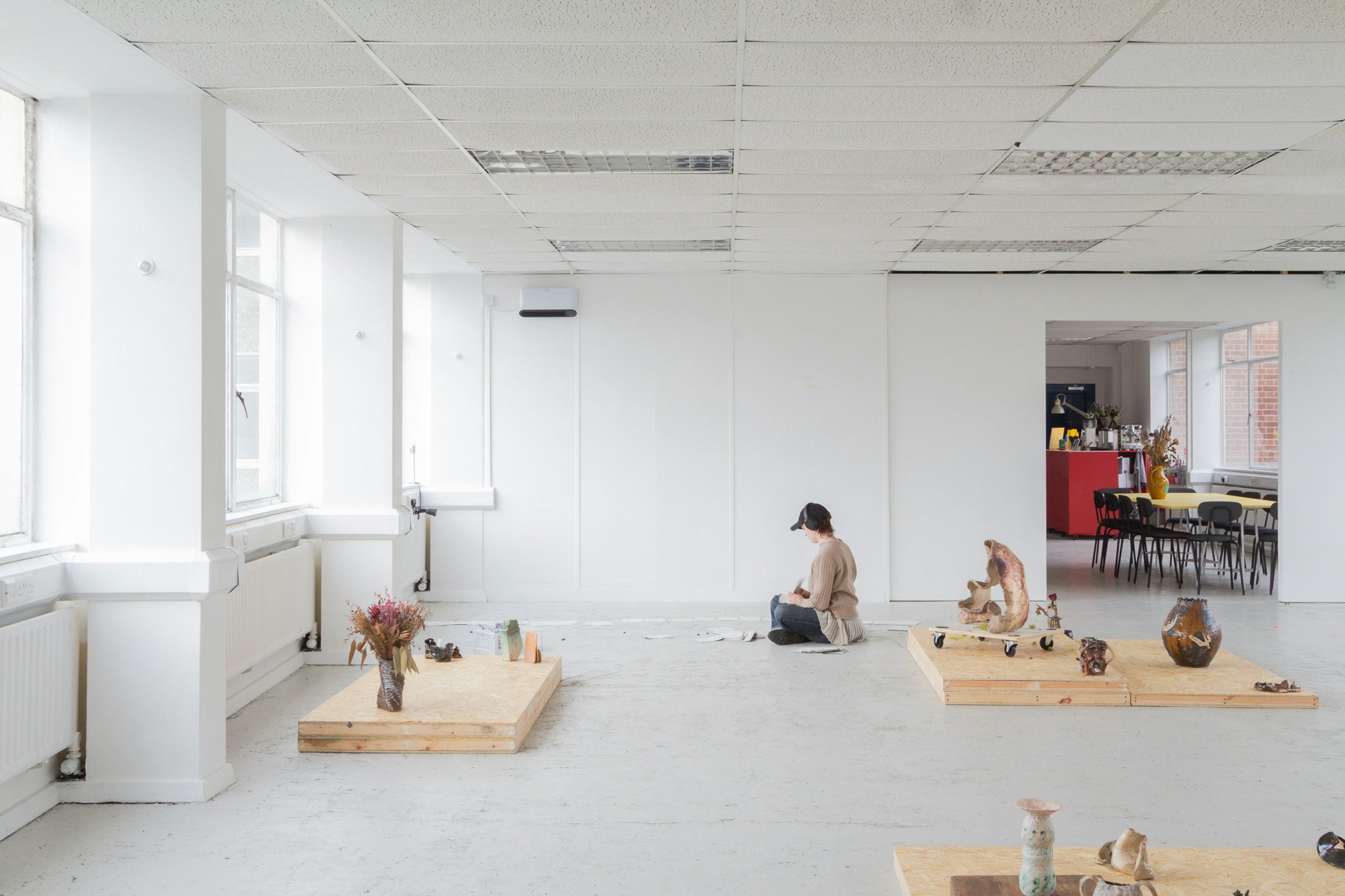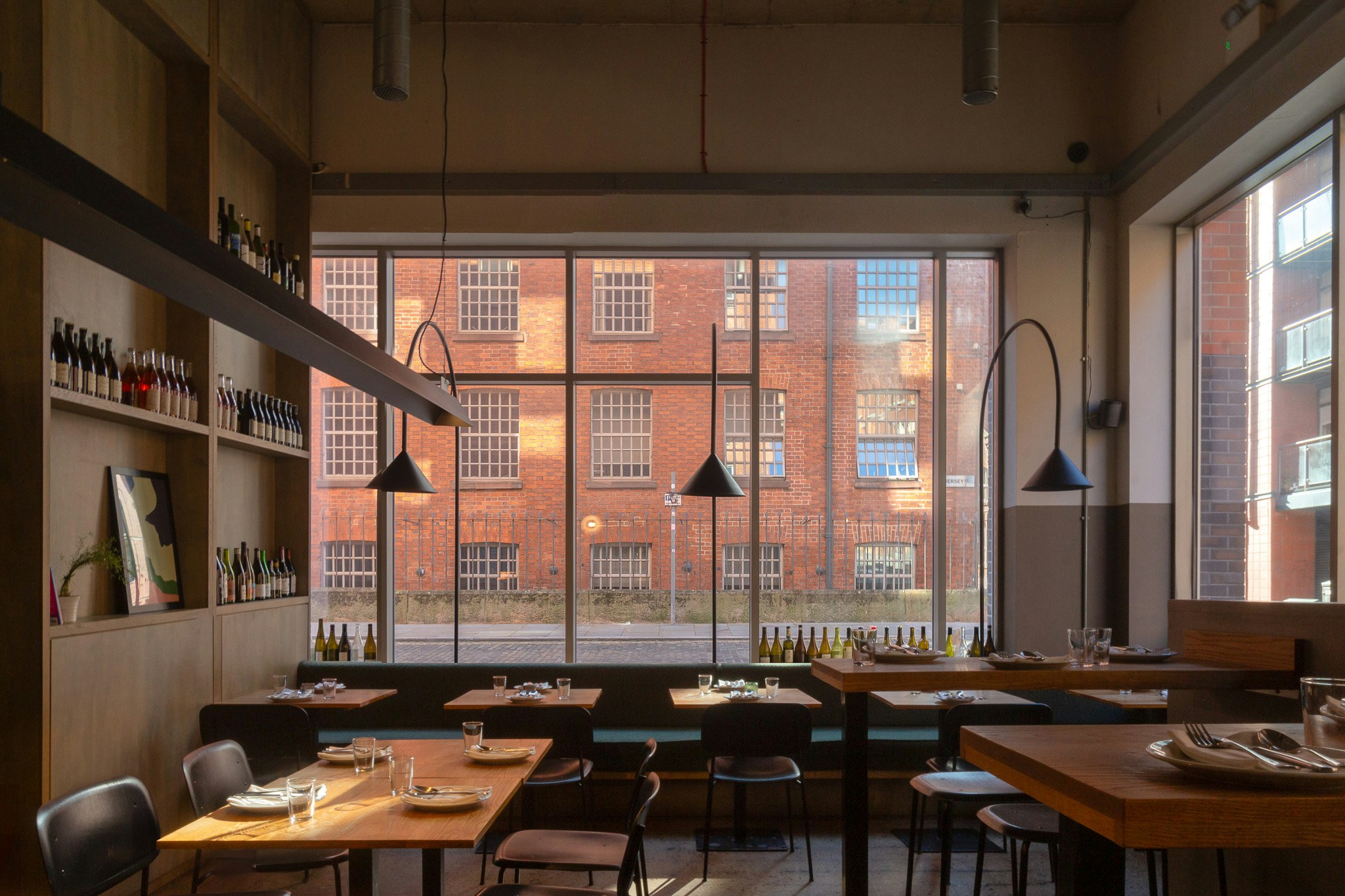
Ancoats & New Islington: An Area Guide
Ancoats and New Islington have become two of Manchester’s most sought-after neighbourhoods, and are going from strength to strength.
13 December 2024
In 1979, scientist Alexander Schauss studied the effects of a specific shade of pink on human behaviour, which he named Baker-Miller Pink, by painting prison cell walls and studying the behaviour of the inmates. He theorised that it would have a calming effect and reduce violence, which was proven to be temporarily successful in some cases. However in a prison in Arizona, inmates actually became more aggressive, scratching the walls and becoming visibly frustrated. This feeling of frustration is how founding director Katy Morrison felt when looking at the state of the Manchester art scene, and led to the creation of PINK: A fiercely independent, artist-led Gallery, Event Space and Studios based in Stockport.
PINK’s curatorial strategy is deeply informed by Katy Morrison's academic and professional journey, studying Art History, Curation, and most recently working towards her PhD at Manchester School of Art. Her approach rejects the formality and neutrality of traditional “white cube” gallery spaces. Instead, she embraces curation that intertwines process and final product, valuing the dynamic conversations and collaborations inherent in creating art. Central to PINK’s philosophy is the importance of fostering opportunities for emerging artists. By designing spaces where creation and exhibition coexist, she provides a platform for those at the start of their careers—something often unavailable in traditional, more rigidly curated galleries. This inclusive model prioritises the energy of experimentation over the static presentation of archival or established works, creating a space where ideas are not just displayed but actively developed. This thoughtful, process-driven approach challenges the norms of gallery culture, making art more accessible and emphasising its potential as a dialogue rather than solely a final product.
Katy Morrison: “At PINK, I’ve developed a model that operates at the intersection of curation, interdisciplinary research, and collaborative exchange. The gallery, studio, and event space provide a platform for artists to explore ambitious, innovative work that often marks their first major exhibition in Manchester. The way I see it, curation isn’t just about presenting finished pieces—it’s also about embracing process, creating opportunities for dialogue, and fostering long-term, supportive relationships with artists.
This approach is deeply tied to my PhD at Manchester School of Art, where I’m conducting a practice-based study on artist residencies as performative spaces for curatorial enquiry. PINK, as an active entity, has become a kind of living lab for my research. The ideas I’m exploring academically—how residencies can challenge traditional notions of curation and process—are directly reflected in PINK’s programming and ethos. It’s been exciting to see how the practical and theoretical sides of my work feed into one another, creating a richer, more dynamic model of curatorial practice. -Although I must admit it’s a non-stop balancing act managing the two strands!”
“By rejecting traditional “white wall” gallery spaces and formal curation, PINK reimagines how art can be presented and experienced.”
You may well have passed by the former 1960s "abandoned" office block, Hilton House, with no idea of what lies behind its stark modernist aesthetic. It has been the home of PINK since 2023, from initially taking on a single floor to now occupying three stories. Although somewhat unconventional when compared to the polished aesthetic of “white box” or historic galleries, Katy Morrison’s choice of venue reflects the artist-led approach that rejects the formality of the more traditional art institutions.
Although somewhat unexpected, many of the architectural features evident in 1960s office design lend themselves well to its new function, and to adaptive-reuse more generally. Open plan interiors were reflective of changing attitudes towards collaboration and productivity at work, seen elsewhere in post-war Europe, specifically championed by the concept of “Burolandscaft”, or “Office Landscape”, in Germany. These open floor plans involved structured grids which removed the need for load bearing walls, and maximised natural light - all elements which lend themselves very successfully to a flexible art space.
KM: “When I first viewed Hilton House, the open floor plan and large windows immediately stood out. The natural light and expansive views create an inspiring atmosphere that’s ideal for both creating and exhibiting art. Beyond that, there were five pre-built office-style spaces that I knew I could quickly transform into artist studios. This feature was crucial—it allowed me to generate cash flow almost immediately and helped PINK hit the ground running with its operations.”
These open plan spaces allow for wide-open flexible exhibition spaces, currently pictured here as being used for a ceramic exhibition, as well as allowing the team at PINK to put up their own partitions to create individual studios, alongside the repurposing of management offices. Although designing for retrofitting was not as high on the architectural agenda in the 1960s, the open floor plan inadvertently has proven a successful candidate for complete reuse. Katy spoke with us about the renovation process, and how she went from deciding to take on the space, to transforming it to the space it is today.
The re-appropriation of derelict buildings is nothing new for artists, even for Manchester artists in recent times. In the 1990s, Hulme Crescents saw a huge number of artists re-appropriating abandoned apartments, creating makeshift music venues and recording studios such as The Kitchen, which had a huge impact on Manchester’s Acid House scene. Speaking to founding director Katy, the decision to take over this unassuming building was led by the need for space at good value for money, to support the dream and vision she had.
Giving an abandoned building a new lease of life is often related to the rise in the need to retrofit buildings for climate change response and sustainability. While this is a benefit to what PINK are doing, the environmental benefits of what could be described as “community-led adaptive reuse” are just that - benefits; a perk to what is ultimately a necessity to survive and thrive in the arts in today’s economic landscape.
KM: “Renovating the space at Hilton House came with its challenges. We had to refurbish the floor, construct walls to shape the gallery, and tackle seemingly endless damp patches. None of this was easy, and took a lot of time. Especially as I was personally self-funded the renovations through my then full-time salary, so I had to wait until the end of each month to order more materials! But taking on a space that needed work gave us the freedom to truly make it our own, aligning it with PINK’s identity and mission.
The Renovation in Process (Source: @pinkmcr_ on Instagram)
The Space Today
Interestingly, as noted by PINK’s graphic designer and co-director Nick Booton, this is a pattern which can be seen across many elements of PINK, and arts organisations more widely. He told us that companies who are working to achieve “B-Corp” status, which is reserved for companies with ”high standards of social and environmental performance, transparency, and accountability”, often require a lengthy ticklist of points such as material recycling and reuse, and a focus on wider community benefit. In the arts, a lot of these tickboxes are checked inherently, from the simple necessity of repurposing materials across exhibitions for money and space saving purposes, to a people-focused approach which works to reinvest money into its residents and artists, as well as improving the spaces and growing the collective. This is also in part to PINK becoming a CIC (Community Interest Company) in 2022, which by definition “operates to benefit the community, rather than private shareholders”, while also offering an added level of financial and community security to PINK. This formality, Katy tells Böhm, is crucial. She says that the stereotype of the “starving artist” is unhelpful, suggesting the struggle is necessary. Instead, creating infrastructure such as PINK means that artists can work without the inherent worry and struggle.
KM: “Over the last decade, I’ve founded and directed a number of artist-led and self-organised projects in Manchester. PINK is very much a culmination of all the things I’ve learned throughout those experiences—both how to do things and, just as importantly, how not to. While the opportunity to take on an in-kind space in Manchester city centre was a catalyst for launching PINK, the concept itself has been shaped by years of practice, experimentation, and reflection. It brings together my academic insights and practical knowledge to create a space that responds to the needs of the artistic community in a way that feels both meaningful and sustainable.”
Although the colour pink is not featured at all in the interior design or branding (an intentional decision by Nick Booton), colour has been used very intentionally throughout the space, specifically ideas of colour theory and how colour can impact or indicate moods or spaces. Walking through the front doors of the space, a deep blue indicates entering into a space of loyalty and trust. A large, bright yellow table further welcomes individuals, representing a space for community, creativity, and collaboration/coming together. Alongside this is a bar, serving coffee and drinks in the evening, painted bright red to indicate the energy of this area. And, each of the studio doors are painted green, to indicate the growth of the artists who create in each space. This colour theory also extends to a secondary reason for the name PINK: combining the “call to action of red, with the delicate, attention to detail of white”. This is the epitome of what PINK are doing with their curatorial and artistic strategy - doing things differently, fiercely independently, rejecting the existing rules and formality of the art world, while doing it with an artistically led, intentional and delicate hand.
The community of PINK, Katy tells us, is one of the most important elements driving people to work in the space. She believes it’s also a key reason that no studio holders have yet left, alongside the long waitlist of artists eager to join. This strong sense of community is both rare and vital, offering something that many artists lose after graduating from formal education.
In a studio environment, such as is found in art education, creative communities are able to thrive naturally. They foster collaboration, inspiration, and a supportive network which can feel essential to growth as an artist. After leaving education, however, many artists find themselves adrift—working alone in makeshift spaces, like the corners of bedrooms or kitchens. Over time, this isolation can lead to stagnation or even the complete abandonment of artistic pursuits. PINK changes this narrative, providing a space for artists to find or rediscover their creative community - from graduates, to established arts practitioners.
KM: “For early-career artists, having access to spaces like PINK is vital. Institutional spaces in Manchester can often feel inaccessible to those at the beginning of their journey. PINK exists to bridge that gap. By offering emerging artists the space and resources to experiment, collaborate, and showcase their work, we aim to provide opportunities that might otherwise be out of reach. It’s about leveling the playing field and helping artists build confidence in their practice while gaining visibility in the broader art community.”
Beyond the community itself, PINK offers structure and validity to artistic careers. Some studio holders come after their 9-to-5 jobs or on their days off, carving out time to dedicate to their art. This flexibility ensures that artistic practice remains accessible, not an all-or-nothing pursuit. By offering a space for young artists to make early work, explore new ideas, exhibit, and engage in discussion, PINK plays a critical role in fostering the next generation of creatives. Importantly, PINK’s open-door policy invites Stockport residents and visitors alike to engage with the space, ensuring that art remains connected to the wider community rather than existing in isolation.
KM: “Moving from Manchester to a new location in Stockport has been perfect. The town itself, along with its creative community, has welcomed us with open arms. I’ve never felt so supported by a local network of artists, makers, and creatives. It’s a stark contrast to the city centre of Manchester, where I think this kind of community spirit is lacking at the moment. Stockport has offered us not just a space but a true sense of belonging, which has been instrumental in helping PINK thrive.”
The arts have always had a profound role in society, not as something insular, but as a deeply integrated element of culture and daily life. Historically, initiatives like the Grand Tour in the 18th century underscored art’s significance - providing young, wealthy men with the opportunity to study under great masters, immersing themselves in years of artistic and cultural pursuit. This led to the creation of some of the most celebrated works of art that now fill galleries worldwide. However, such opportunities were reserved for the privileged few. PINK democratises access to artistic spaces, welcoming artists from all backgrounds, ensuring that talent and creativity can flourish regardless of socioeconomic status. By creating and supporting such spaces, we not only nurture individual artists but also enrich our shared cultural landscape. In doing so, we ensure that the galleries of the future will be filled with diverse, meaningful work, and that art will remain a vital part of our everyday lives for years to come.
If you’d like to learn more about PINK, or would like to attend one of their exhibitions or events, you can follow them on instagram here, or visit their website here.
Words and Images by Ella Wheatley.
Ancoats and New Islington have become two of Manchester’s most sought-after neighbourhoods, and are going from strength to strength.
Subscribe to our newsletter for property insights and updates.
